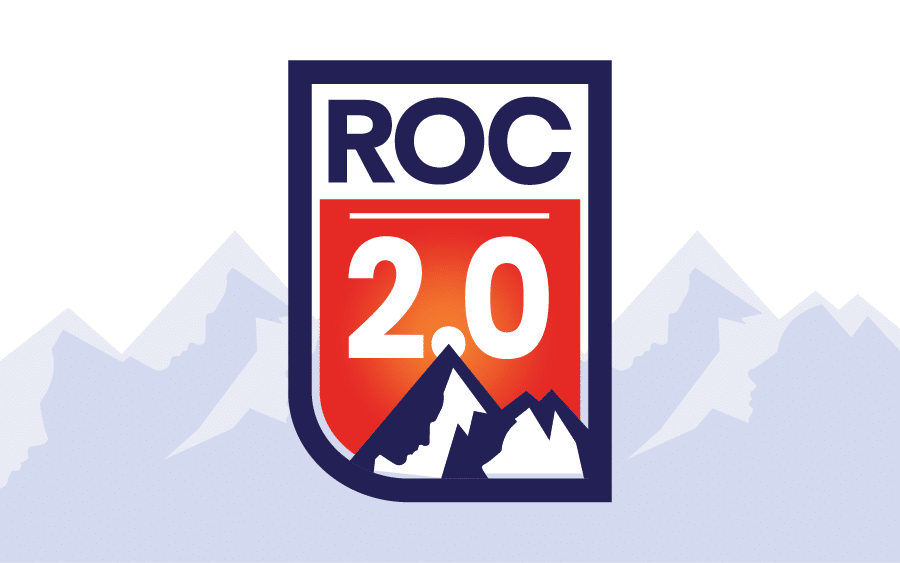Over the course of the last seven years Rank One has raised the industry-wide bar on what is possible with a software development kit. The ROC SDK has demonstrated that top-tier face recognition accuracy can be delivered alongside algorithm efficiency metrics that are often 10x better than industry peers. It has further demonstrated that API’s for an SDK can be lightweight but highly effective and easy to integrate. Rank One’s technical support has consistently separated us from other solutions, because our lead engineers provide rapid responses to technical inquiries. ROC SDK gives trusted biometrics a new meaning since Rank One is an employee-owned company that develops its software entirely in-house and in the U.S.A. Finally, Rank One has led the way by establishing the facial recognition industry’s first code of ethics to govern the use of our algorithms and software in both commercial and government applications.
Building on this strong foundation, Rank One announces a new chapter in its algorithmic offerings with the release of the ROC SDK version 2.0.
ROC SDK version 2.0 delivers both substantial face recognition improvements and a completely new feature set of computer vision and machine learning capabilities. Specifically, the SDK now supports detection of a wide range of objects and text recognition on a wide variety of challenging images (e.g., license plates in the wild).
- Sizable accuracy improvements to the face recognition algorithms; in the past five months error rates have been reduced 2x or more across a range of deployment scenarios and bias factors
- Newly added automated compliance checks for the ICAO “Portrait Quality for Machine Readable Travel Documents” standard and the forthcoming update to the ISO/IEC 29794-5 Face Image Quality standard
- Significantly improved presentation attack detection (liveness)
- Newly added object detection algorithms offering top-tier accuracy and efficiency
- Newly added optical character recognition providing a top-tier commercial solution
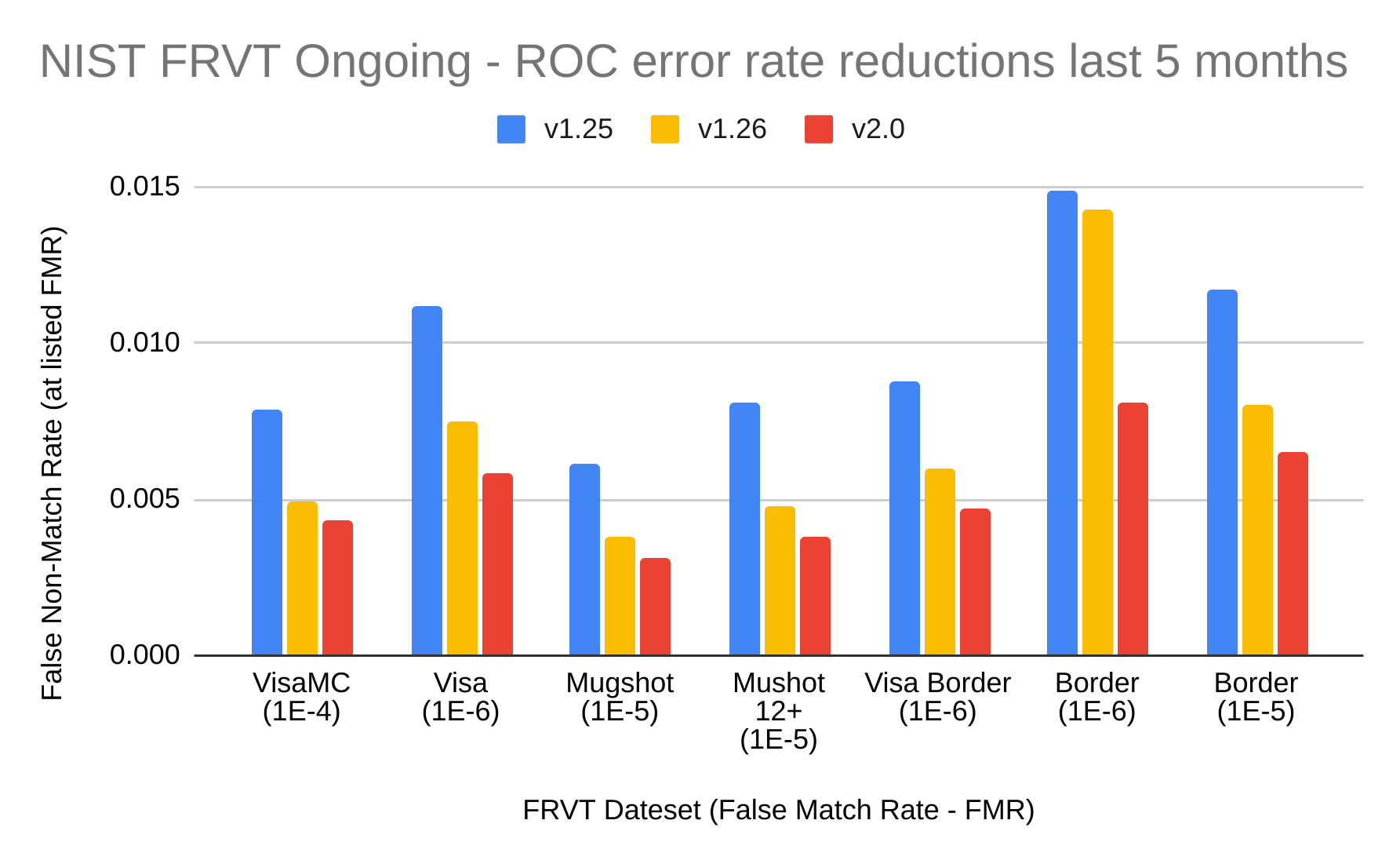
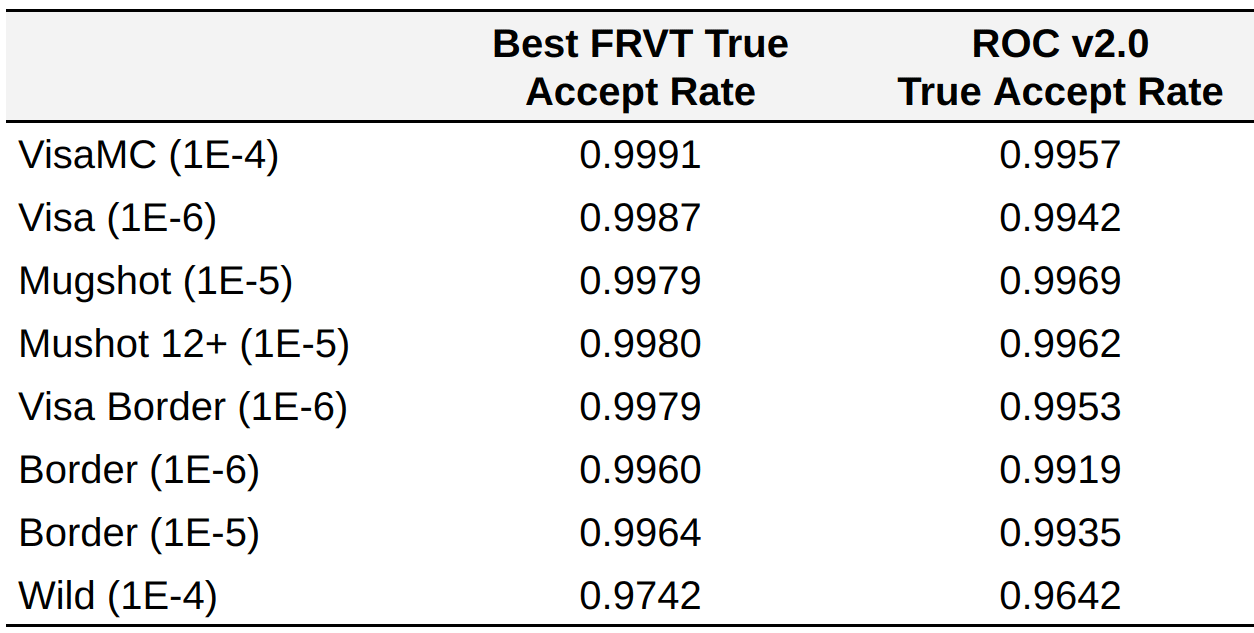
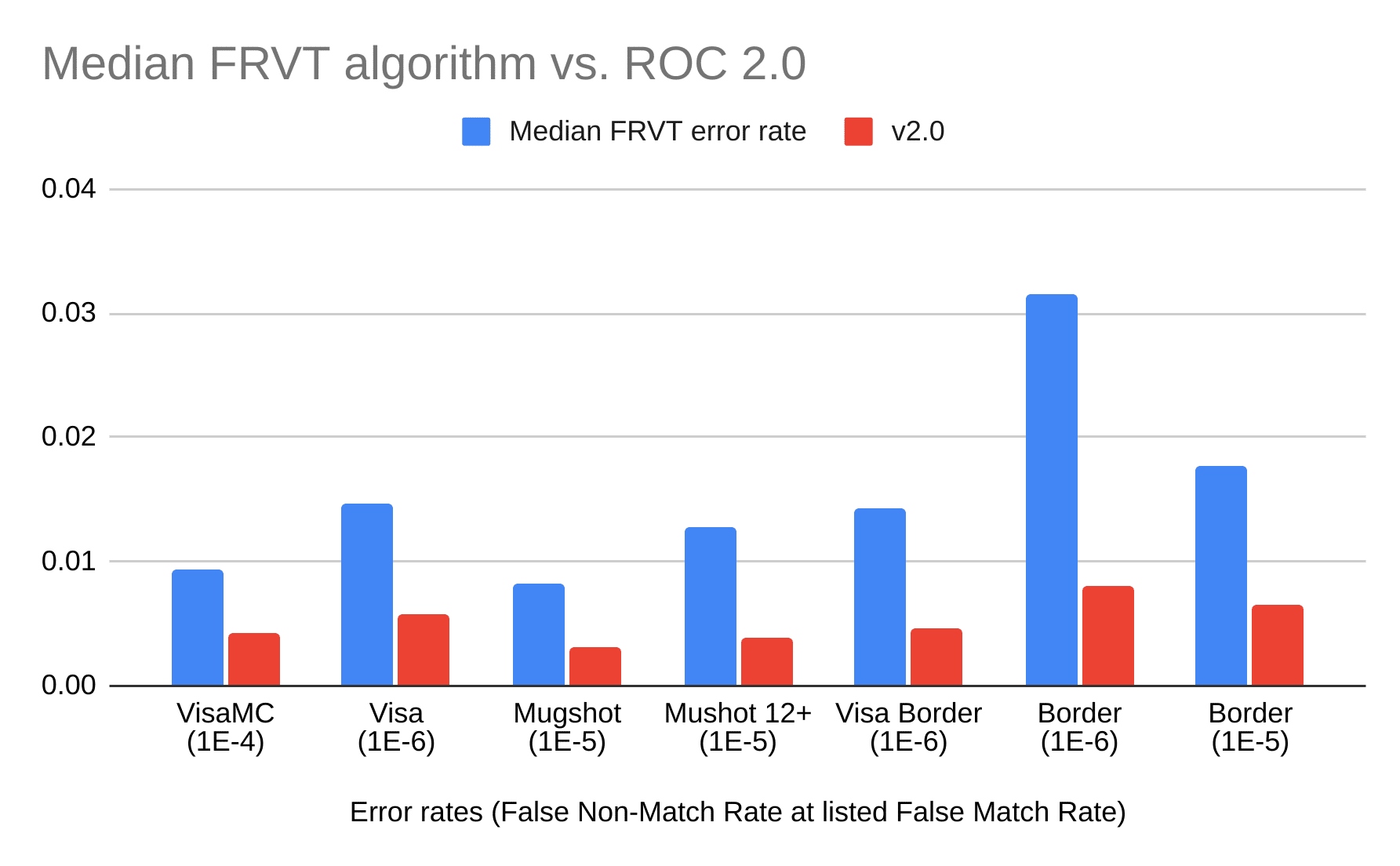
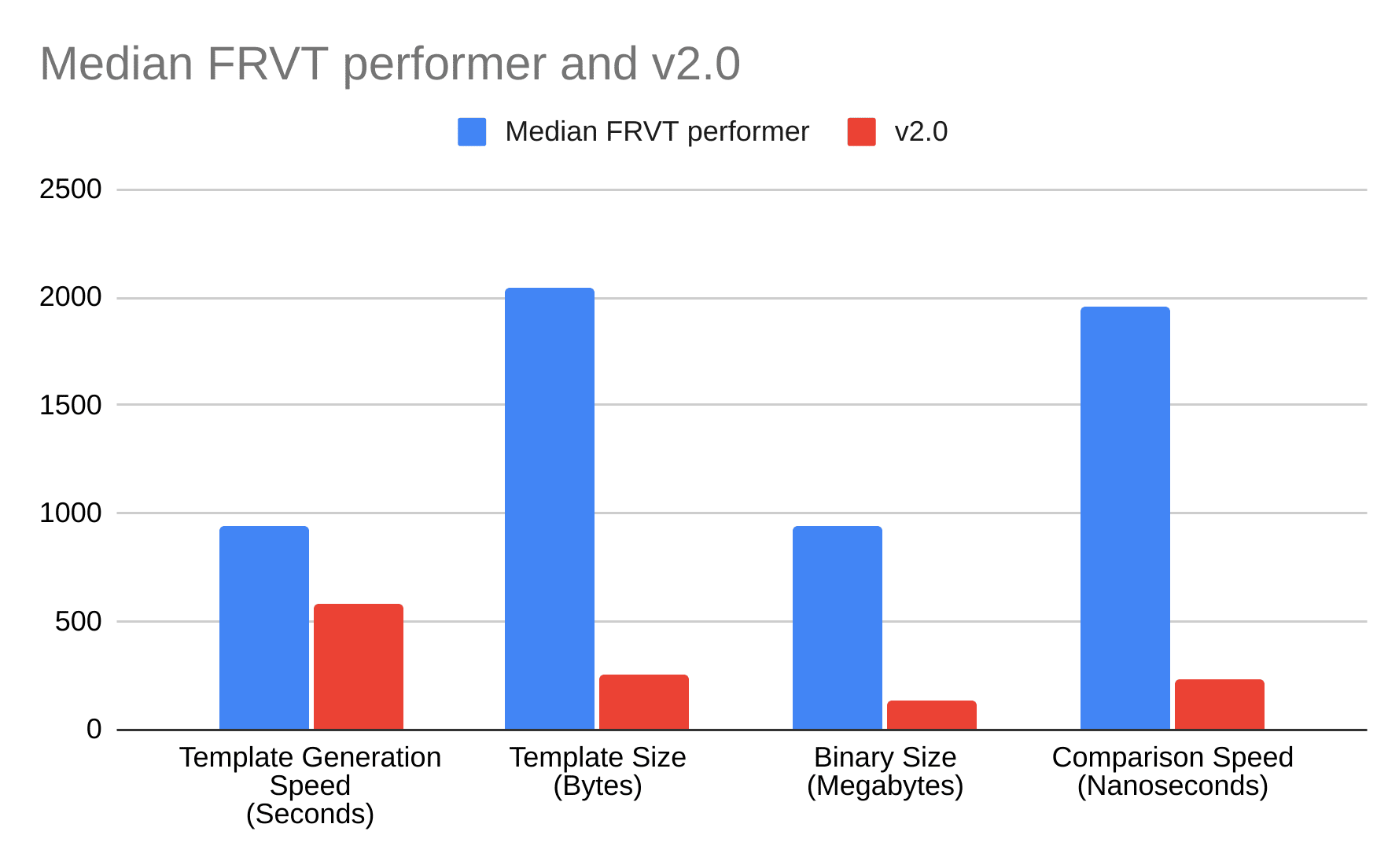
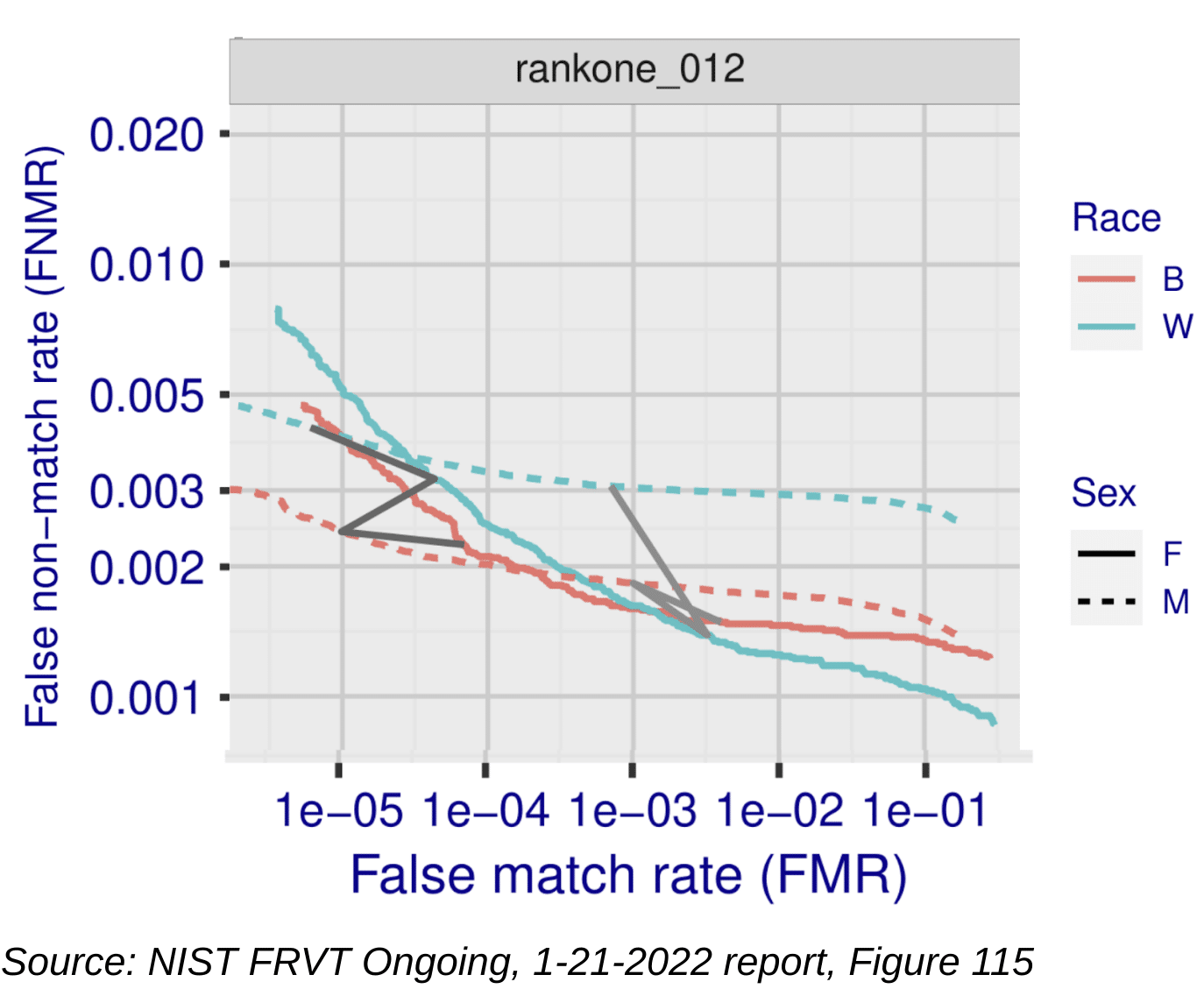
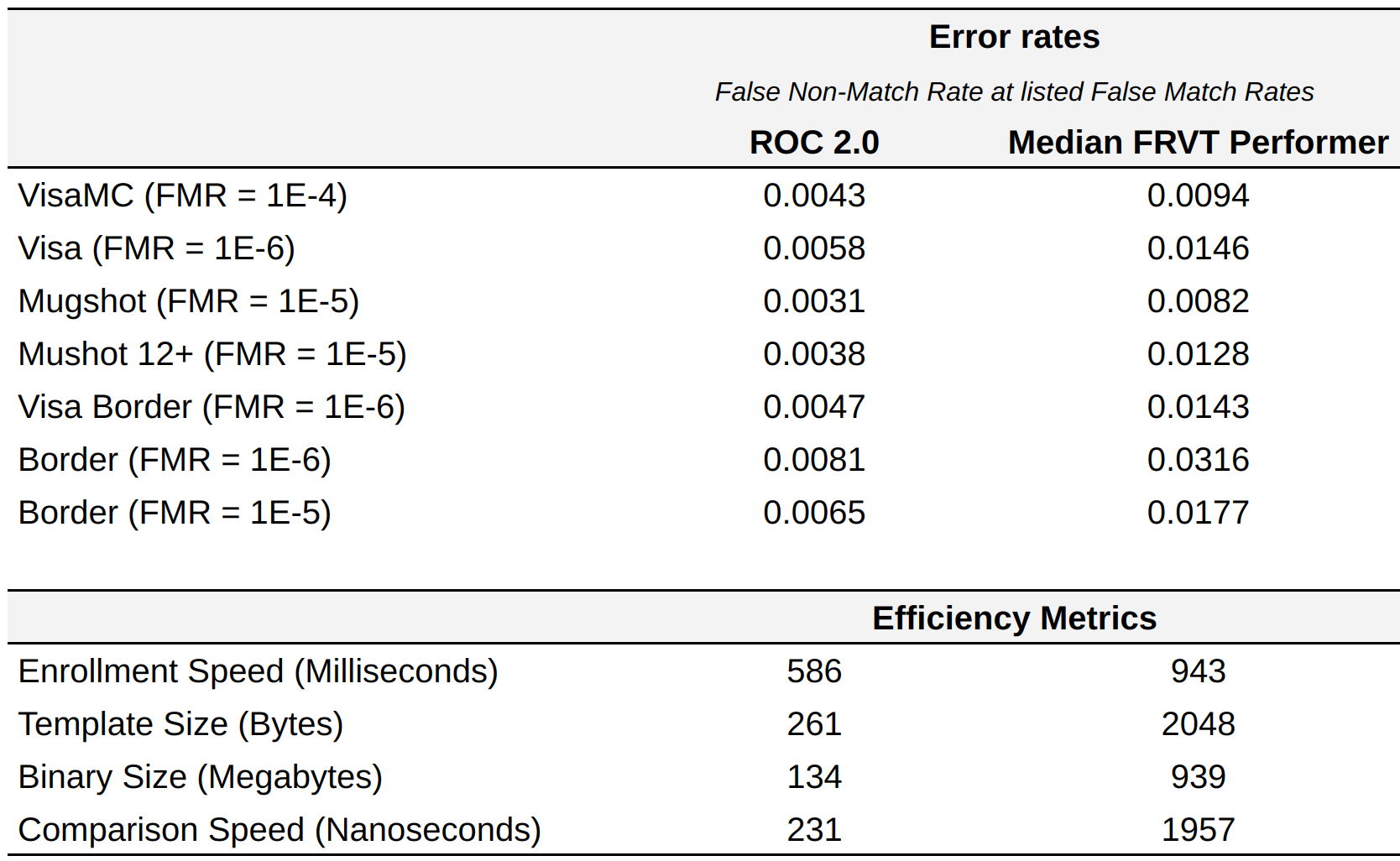
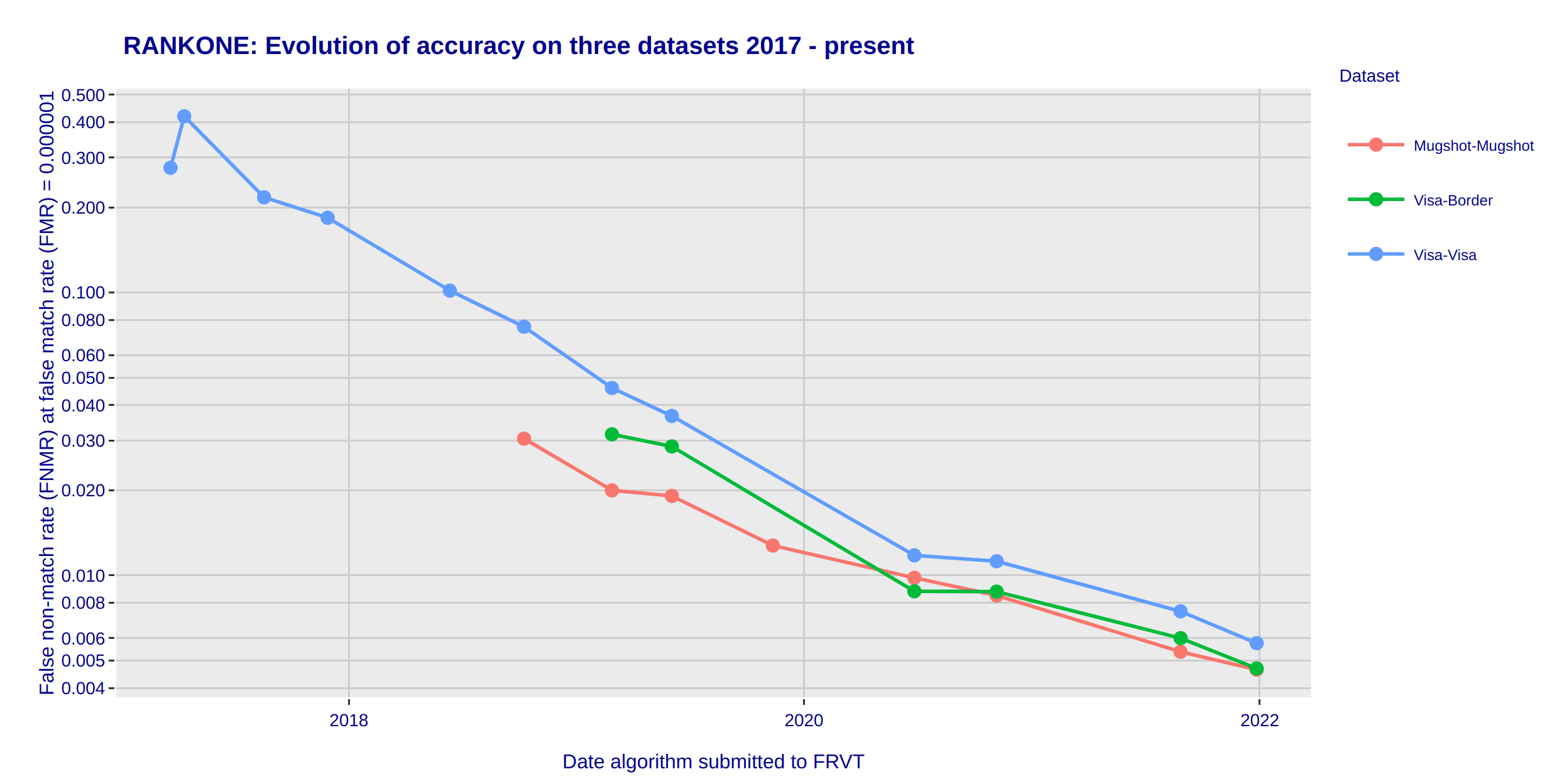
These improvements are stunning given how successful the algorithms were in years past. And while such improvements are often being delivered by industry providers, Rank One continues to stand out with the practice of Evergreen Licensing, which offers a simple approach for ROC customers and partners to receive continued access to such ground breaking accuracy improvements.
While the recent improvements to the ROC SDK have reaffirmed its status as the industry leader in top-tier accuracy and efficiency, the innovation train continues to move at a rapid pace via Rank One’s vigorous R&D initiatives. In Spring 2022, we expect to release a new ROC SDK version with yet another powerful set of improvements to the depth of our FR capabilities and breadth of our computer vision capabilities.
With the release of ROC 2.0, substantial improvements are being delivered to this portfolio of facial analytics.
Beyond travel applications, capturing a high quality enrollment photo is a prerequisite for digital identity solutions, access control solutions, and broadly any use case with a database of authorized users. The ROC SDK version 2.0 automated ICAO/ANSI-NIST quality metrics can enable any use case to automatically capture a compliant image from a streaming video source, and thereby ensure high quality, easier-to-match photos in the database of authorized users. This quality thresholding will reduce both false positive and false negative errors in operation by enhancing the quality of probes and database images.
In addition to the ICAO standard, the ISO/IEC 29794-5 Face Image Quality standard is being updated and will become part of a new evaluation report provided by NIST FRVT.
To support these growing requirements for automated face image compliance checks, the ROC SDK now includes a complete automated ICAO compliance check. Specifically, the following factors can be measured and validated by ROC SDK algorithms:
| FACTOR | DESCRIPTION |
| Lighting | Portraits shall have adequate and uniform illumination. Lighting shall be equally distributed on the face |
| Dynamic range | The dynamic range of the image should have at least 50% of intensity variation in the facial region of the image. |
| Pose | Head aligned toward the camera (Pitch/Yaw/Roll) |
| Expression | The face shall have a neutral expression |
| Accessories: Glasses | Tinted glasses, sunglasses, and glasses with polarization filters shall not be worn. |
| Accessories: Head coverings | The region of the face, from the crown to the base of the chin, and from ear-to-ear, shall be clearly visible. |
| Portrait Dimensions + Head Location | The head shall be centered in the final portrait |
| Portrait Dimensions and Head Location | The image width A to image height B aspect ratio should be between 74% and 80% |
| Children | Detect child age |
| Contrast | For each patch of skin on the person’s face, the gradations in textures shall be clearly visible |
| Background | Detect whether or not the background is uniform |
| Pose | Eyes aligned toward the camera |
| Eye visibility | Both eyes shall be opened naturally, but not forced wide-opened. |
| Accessories: Glasses | Any lighting artifacts [e.g. glare] present on the region of the glasses shall not obscure eye details |
| Accessories: Facial Ornamentation | Facial ornamentation which obscures the face shall not be present |
| Style: Makeup, Hair Style | The hair of the subject shall not cover any part of the eyes |
Further, while these compliance checks can be integrated into existing or new applications via the ROC SDK, the ROC LiveScan application also provides a turn-key solution to performing image compliance checks and extracting the highest quality facial image of a person presenting themselves to a camera. This application is fully customizable to allow for additional ROC analytics to be included as part of the compliance check.
With ROC 2.0 a wide range of new capabilities for video analytics are being delivered. These include object detectors, license plate recognition (LPR), and optical character recognition (OCR) capabilities.
- Car
- Truck
- Bus
- Motorcycle
- Bicycle
- Person
- License Plate
- Gun
- Military Vehicle
- Airplane
- Boat
These detectors offer ROC integrators significant accuracy and efficiency improvements over other off-the-shelf solutions. While there is not an equivalent to FRVT for object detection, there are other methods to establish the effectiveness of the ROC object detectors. For example, when compared to the Yolo v5, a leading open source object detection framework in terms of both accuracy and efficiency, the new ROC detectors offer substantial performance improvements:
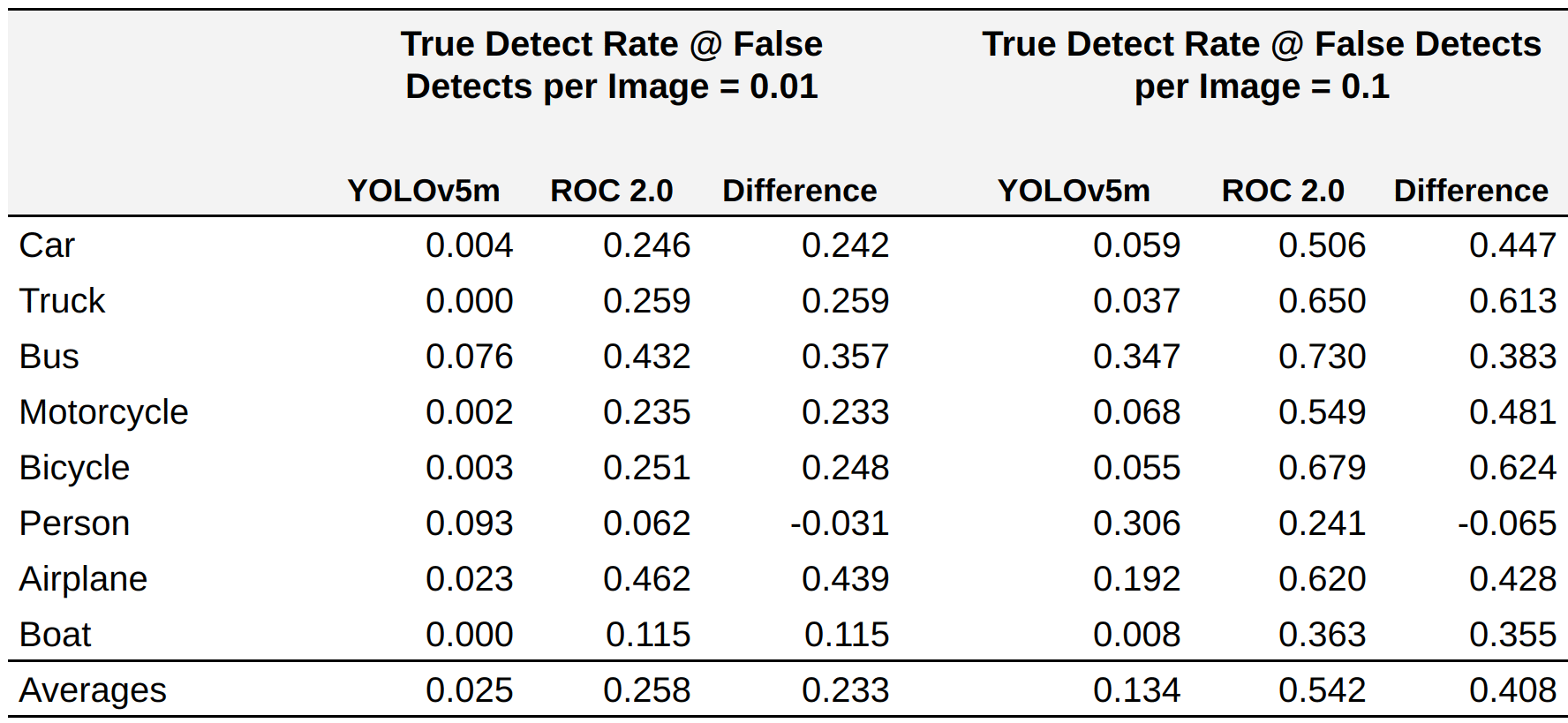

Stay tuned for more significant algorithm improvements ahead as Rank One Computing has officially entered the ROC 2.0 phase!
